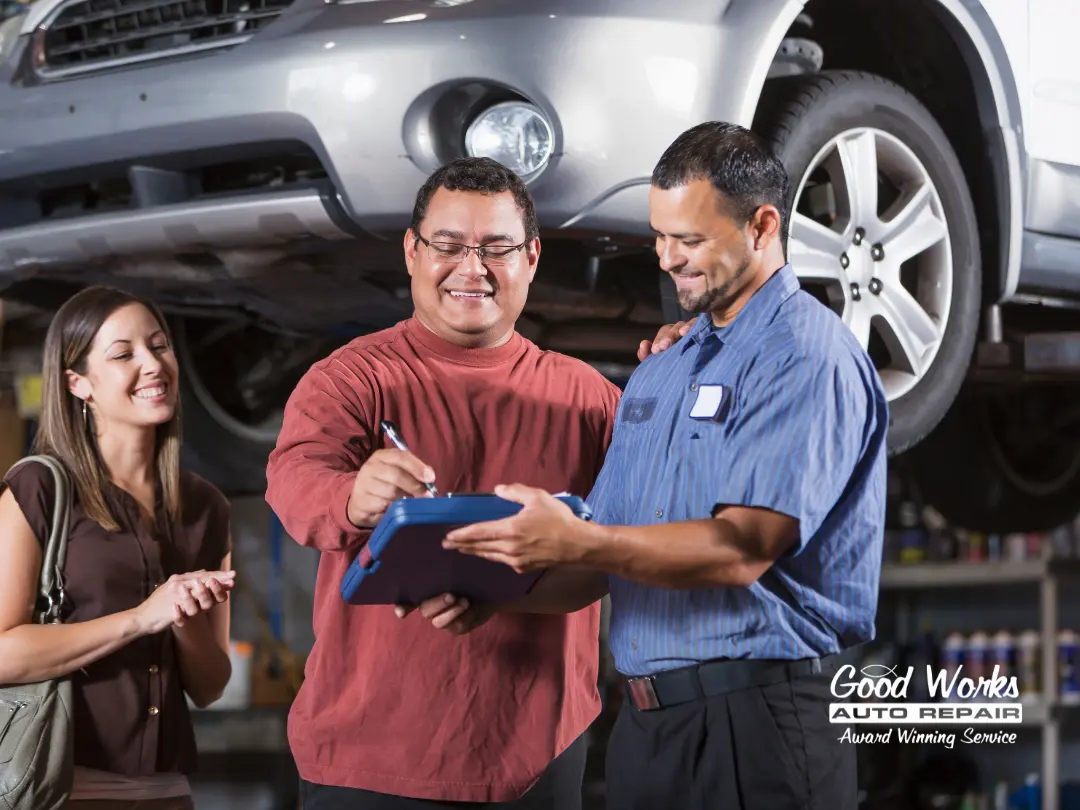All Categories
Featured
Brakes are perhaps one of the most important security function of any kind of car. Without dependable brakes, even one of the most powerful auto can come to be a threat when traveling. That's why routine brake inspections are a should for ensuring your vehicle stops when you require it to. Following a proper brake examination routine can not just keep you secure yet also aid you stay clear of costly repairs. Here's a detailed overview on how to appropriately examine your brakes and what to watch out for.
- The Significance of Normal Brake Inspections. Brakes undergo continual deterioration with every use, whether you're driving at broadband on the freeway or cruising via city roads. In time, brake pads, blades, and various other components use down, which can affect stopping efficiency. Without regular assessments, you might not see the steady decline in efficiency till it's too late.
Routine brake assessments permit you to capture issues early, making sure that your brakes stay responsive, trusted, and safe. Prompt examinations can additionally conserve you cash by dealing with small problems before they come to be expensive repairs.
- Common Signs That Your Brakes Required Focus. While routine brake evaluations are important, there are some warning signs you can watch out for to recognize when it's time to arrange a check-up:
Squealing or Grinding Appears: High-pitched squeaks or grinding sounds when using the brakes are commonly indications that your brake pads are used out and need substitute. Resonance or Pulsation: If you feel vibrations in the guiding wheel or the brake pedal, it might suggest warped blades, which might require resurfacing or changing. Soft or Squishy Brake Pedal: If the brake pedal feels unusually soft or spongy, there may be air in the brake lines or an issue with the master cyndrical tube. Pulling away: If your vehicle draws to one side while stopping, this might be triggered by unequal brake pad wear or a problem with the brake liquid. Increased Stopping Distance: If it takes longer to stop than common, it might indicate that the brake pads are put on, the liquid is reduced, or the blades are harmed. If you discover any one of these symptoms, it's finest to have your brakes examined quickly.

- Trick Parts Checked During Brake Inspections. During a brake assessment, a technician will certainly inspect a number of essential parts of the stopping system to make certain whatever is functioning effectively. Right here are the essential elements involved:
Brake Pads: One of the most typical factor for poor stopping performance is damaged brake pads. Examining the density of the pads is a top priority during every assessment. Brake Rotors: Blades need to be smooth and devoid of grooves or fractures. Any kind of significant damage to the blades can result in jeopardized stopping efficiency and uneven pad wear. Brake Fluid: Reduced or infected brake liquid can hinder stopping performance. The technician will certainly inspect the liquid degrees and high quality and change it if needed. Brake Lines and Tubes: Brake lines should be without leakages or cracks. Any type of damage to the lines can cause loss of brake fluid, resulting in brake failing. Brake Calipers: The calipers apply pressure to the brake pads. They need to be inspected for signs of wear or leaks to guarantee they are working appropriately. Regularly checking these parts aids keep your brake system in peak condition, permitting you to stop your automobile securely and successfully.
- Exactly how Typically Should You Have Your Brakes Inspected? The basic suggestion is to have your brakes examined at the very least once a year or every 12,000 miles, depending upon your driving routines. Particular driving conditions may call for more constant examinations:
Hefty Website Traffic: If you usually drive in stop-and-go web traffic, your brake pads will use down much faster. Hill Driving: Driving on high roadways requires even more frequent stopping, which can trigger your brakes to use more quickly. Towing or Hauling Heavy Loads: If you routinely lug hefty tons, your brakes will certainly experience a lot more stress and call for more regular evaluations. If you notice any one of the warning signs mentioned previously, don't await the next scheduled assessment-- have your brakes checked instantly.
- The Effects of Overlooking Brake Inspections. Neglecting normal brake inspections can lead to significant repercussions. A falling short brake system might result in decreased quiting power, which increases your danger of mishaps.
In the most awful situation, driving with harmed brakes can lead to complete brake failure, placing you and various other drivers at risk. Regular brake assessments are a small investment that can conserve your life and prevent pricey repair services.
- Conclusion: Keep Safe with Routine Brake Inspections. Brakes are not something you intend to take chances with. A dependable braking system is vital for safe driving, and regular brake examinations are a straightforward means to ensure that your cars and truck stops when you require it most. By remaining on top of brake maintenance, looking for advising indicators, and having your brakes checked at the recommended intervals, you'll protect both your vehicle and your safety and security.
Do not wait till your brakes begin to fall short-- timetable regular brake examinations and keep your car in optimum problem for many years to come.
Latest Posts
How Chicago Drivers Pick Montclare Auto Repair for Dependable Service and Great Savings
Find Out Why Chicago Drivers Choose Montclare Auto Repair for Dependable Service and Big Savings
Safeguard Your Home with High Quality Residential Roof Covering
More
Latest Posts
How Chicago Drivers Pick Montclare Auto Repair for Dependable Service and Great Savings
Find Out Why Chicago Drivers Choose Montclare Auto Repair for Dependable Service and Big Savings
Safeguard Your Home with High Quality Residential Roof Covering
